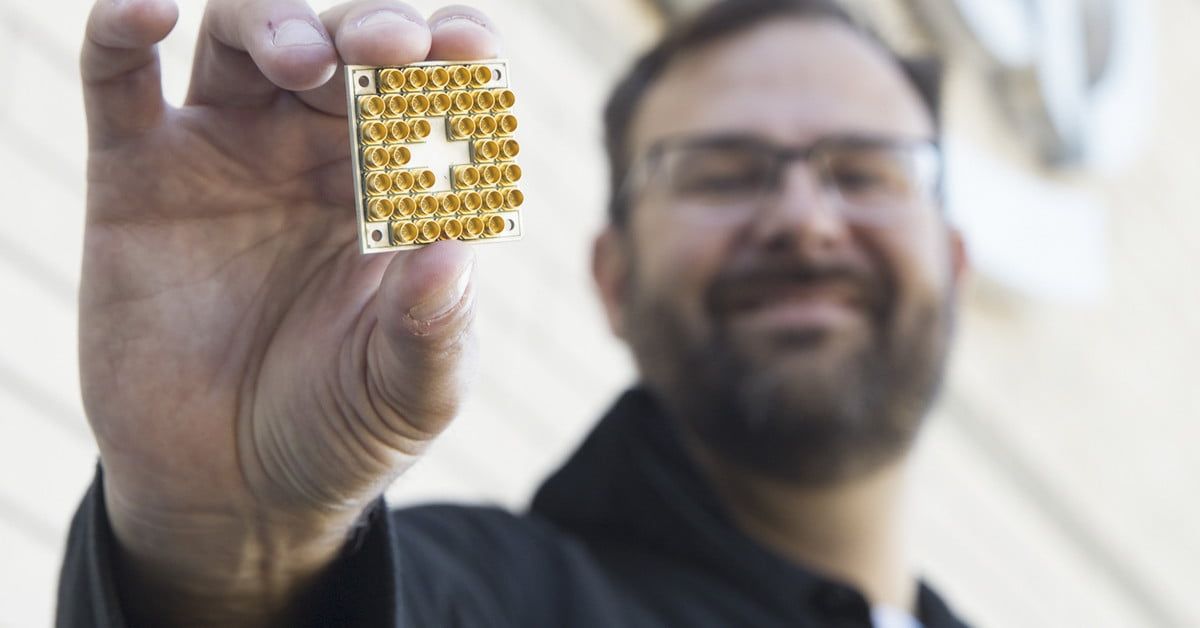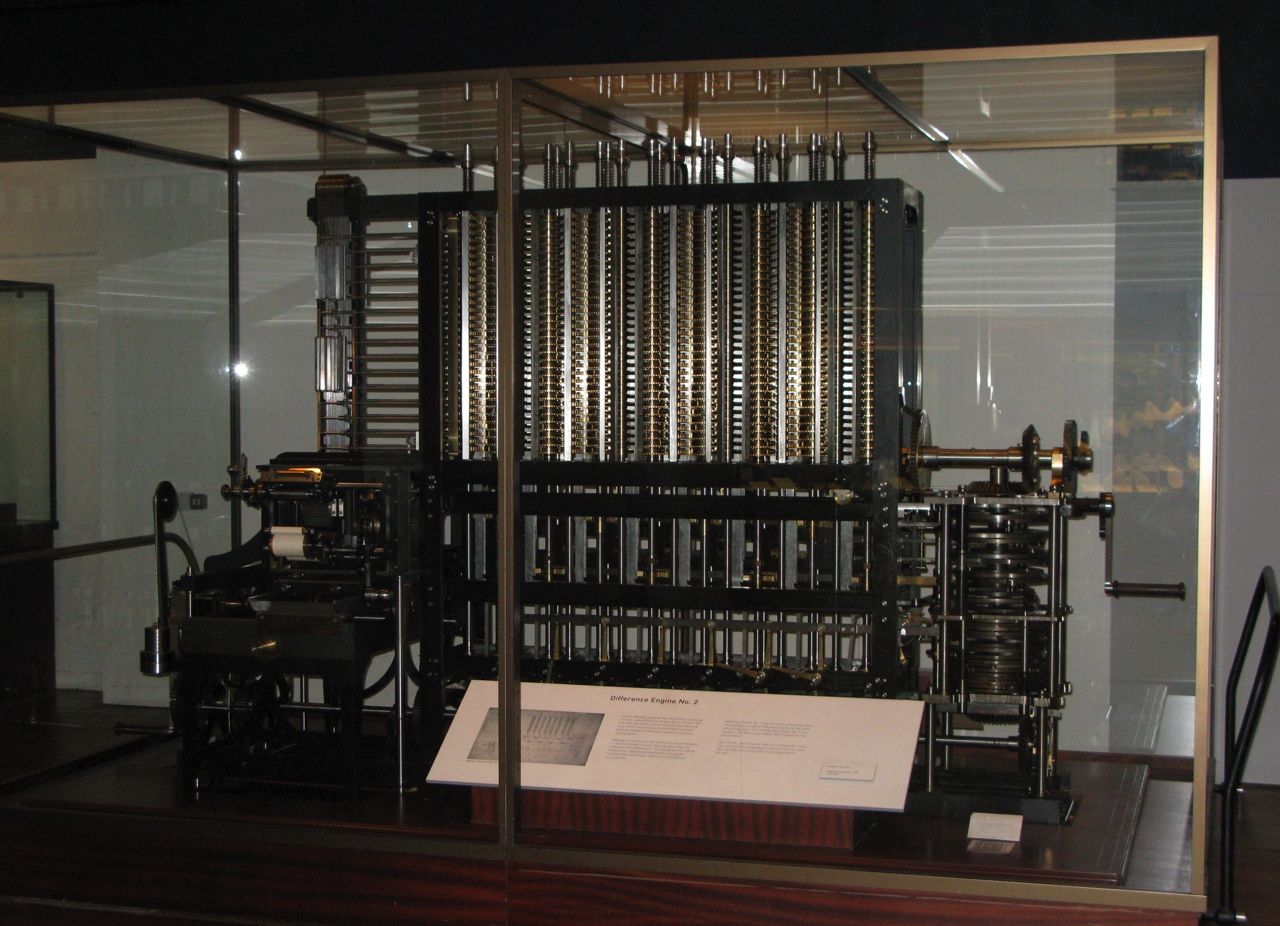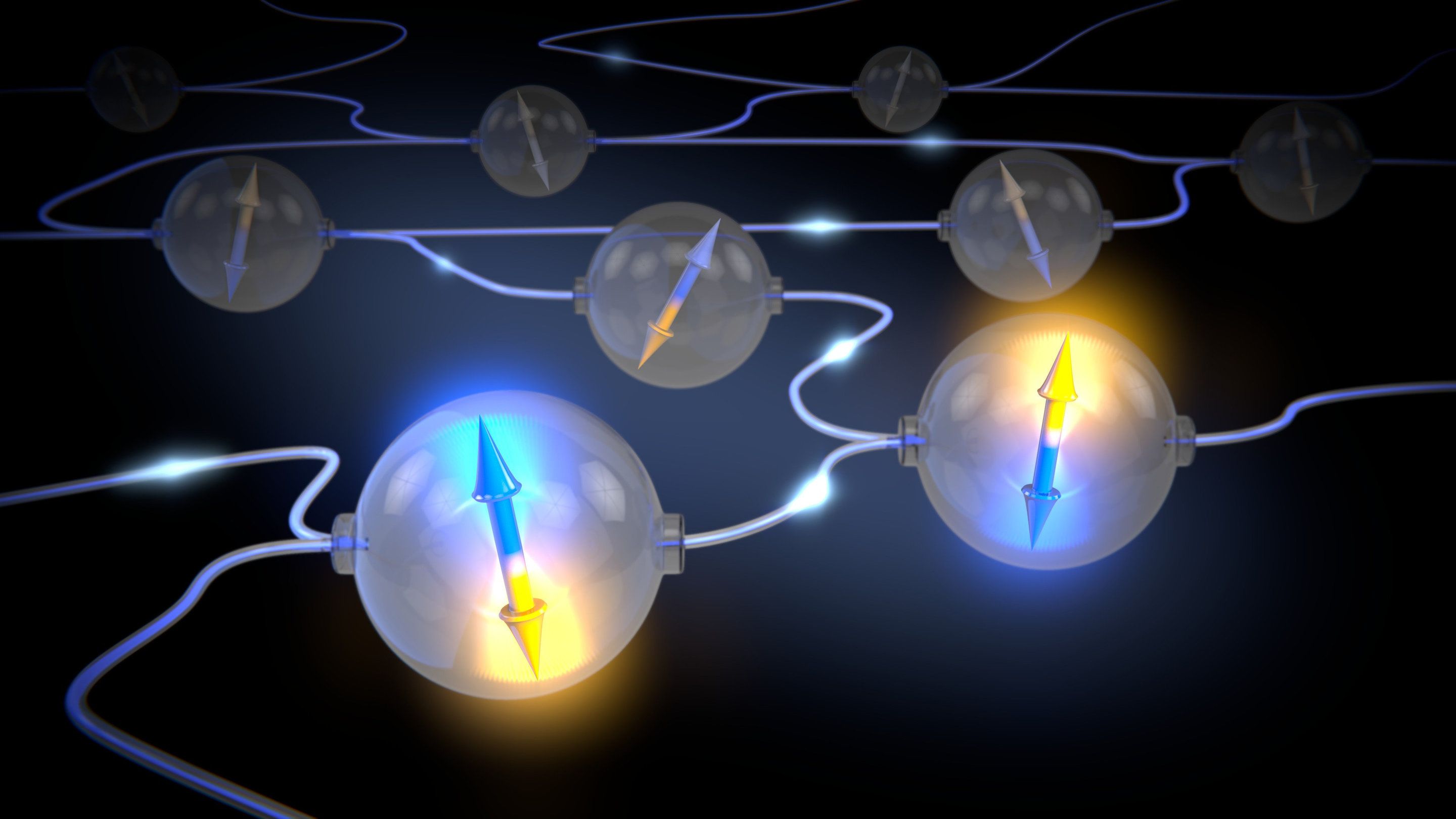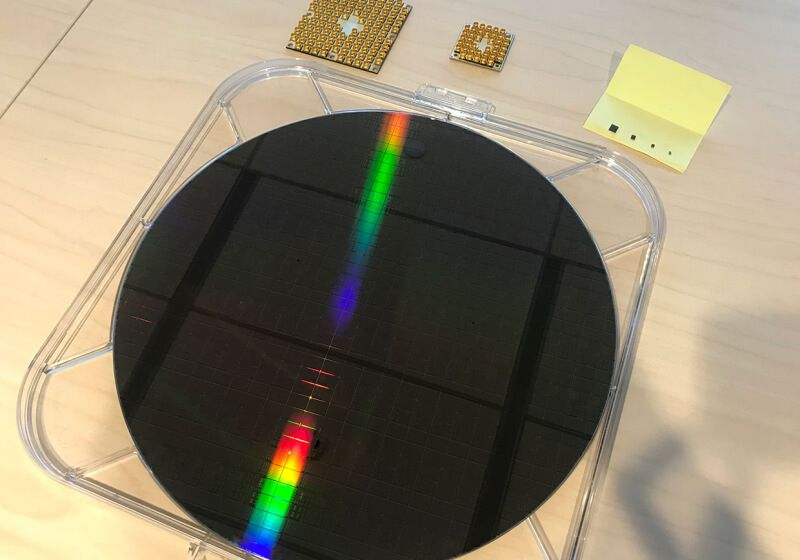Computer simulations have become so accurate that cosmologists can now use them to study dark matter, supermassive black holes, and other mysteries of the real evolving cosmos.



Quantum computers, once they become common, will complete difficult tasks thousands of times more quickly than current PCs. That could obviously threaten a classic chipmaker like Intel, but it plans to use its knowledge of silicon production to build quantum chips more quickly than its peers.

Intel researchers are taking new steps toward quantum computers by testing a tiny new “spin qubit” chip. The new chip was created in Intel’s D1D Fab in Oregon using the same silicon manufacturing techniques that the company has perfected for creating billions of traditional computer chips. Smaller than a pencil’s eraser, it is the tiniest quantum computing chip Intel has made.
The new spin qubit chip runs at the extremely low temperatures required for quantum computing: roughly 460 degrees below zero Fahrenheit – 250 times colder than space.
The spin qubit chip does not contain transistors – the on/off switches that form the basis of today’s computing devices – but qubits (short for “quantum bits”) that can hold a single electron. The behavior of that single electron, which can be in multiple spin states simultaneously, offers vastly greater computing power than today’s transistors, and is the basis of quantum computing.

https://youtube.com/watch?v=doNNClTTYwE
Microsoft is “all-in” on building a quantum computer and is making advancements “every day”, according to one of the company’s top experts on the technology.
Julie Love (above), Director of Quantum Computing, called the firm’s push to build the next generation of computer technology “one of the biggest disruptive bets we have made as a company”.
Quantum computing has the potential to help humans tackle some of the world’s biggest problems in areas such as materials science, chemistry, genetics, medicine and the environment. It uses the physics of qubits to create a way of computing that can work on specific kinds of problems that are impossible with today’s computers. In theory, a problem that would take today’s machines billions of years to solve could be completed by a quantum computer in minutes, hours or days.


Researchers at QuTech in Delft have succeeded in generating quantum entanglement between two quantum chips faster than the entanglement is lost. Via a novel smart entanglement protocol and careful protection of the entanglement, the scientists led by Prof. Ronald Hanson are the first in the world to deliver such a quantum link on demand. This opens the door to connect multiple quantum nodes and create the very first quantum network in the world. Their results are published in Nature.
By exploiting the power of quantum entanglement, it is theoretically possible to build a quantum internet invulnerable to eavesdropping. However, the realization of such a quantum network is a real challenge—it is necessary to create entanglement reliably on demand, and maintain it long enough to pass the entangled information to the next node. So far, this has been beyond the capabilities of quantum experiments.
Scientists at QuTech in Delft have are now the first to experimentally generate entanglement over a distance of two metres in a fraction of a second, on demand, and theoretically maintain this entanglement long enough to enable entanglement to a third node. “The challenge is now to be the first to create a network of multiple entangled nodes—the first version of a quantum internet,” professor Hanson says.



Last year, Intel was able to take a few steps forward towards the commercialization of quantum computing. A 17-qubit superconducting chip was built followed by CEO Brian Krzanich showing off a test chip at CES 2018 with 49 qubits.
Unlike previous quantum efforts at Intel, this latest batch of wafers are focusing on spin qubits instead of superconducting qubits. This secondary technology is still a few years behind superconducting quantum efforts but could turn out to be more easily scalable.
Moving forward, Intel now has the capability to produce up to five silicon wafers every week containing up to 26-qubit quantum chips. This achievement means that Intel has greatly increased the number of quantum devices in existence and could be looking to increase the number of qubits steadily in the coming years.

Scientists from Universidad Carlos III de Madrid (UC3M) have designed a new control system for wind turbines in offshore wind farms that allows power transmission to the coast in a more flexible and cheaper way than current solutions.
This innovation allows the use of a diode rectifier station in the offshore platform of a high voltage direct current (HVDC) link. In this way, the wind turbine’s alternating current (AC) can be easily converted into direct current (DC) for HVDC transmission.
The researchers have developed a distributed control system to synchronise and regulate the electrical voltage and frequency of the wind turbines of the offshore wind farm. This allows the transmission of energy to the general network through an HVDC link with a diode rectifier station. “It is less complicated, cheaper and more flexible than other current solutions,” explains co-author Santiago Arnaltes Gómez, head of the UC3M Power Control Group.